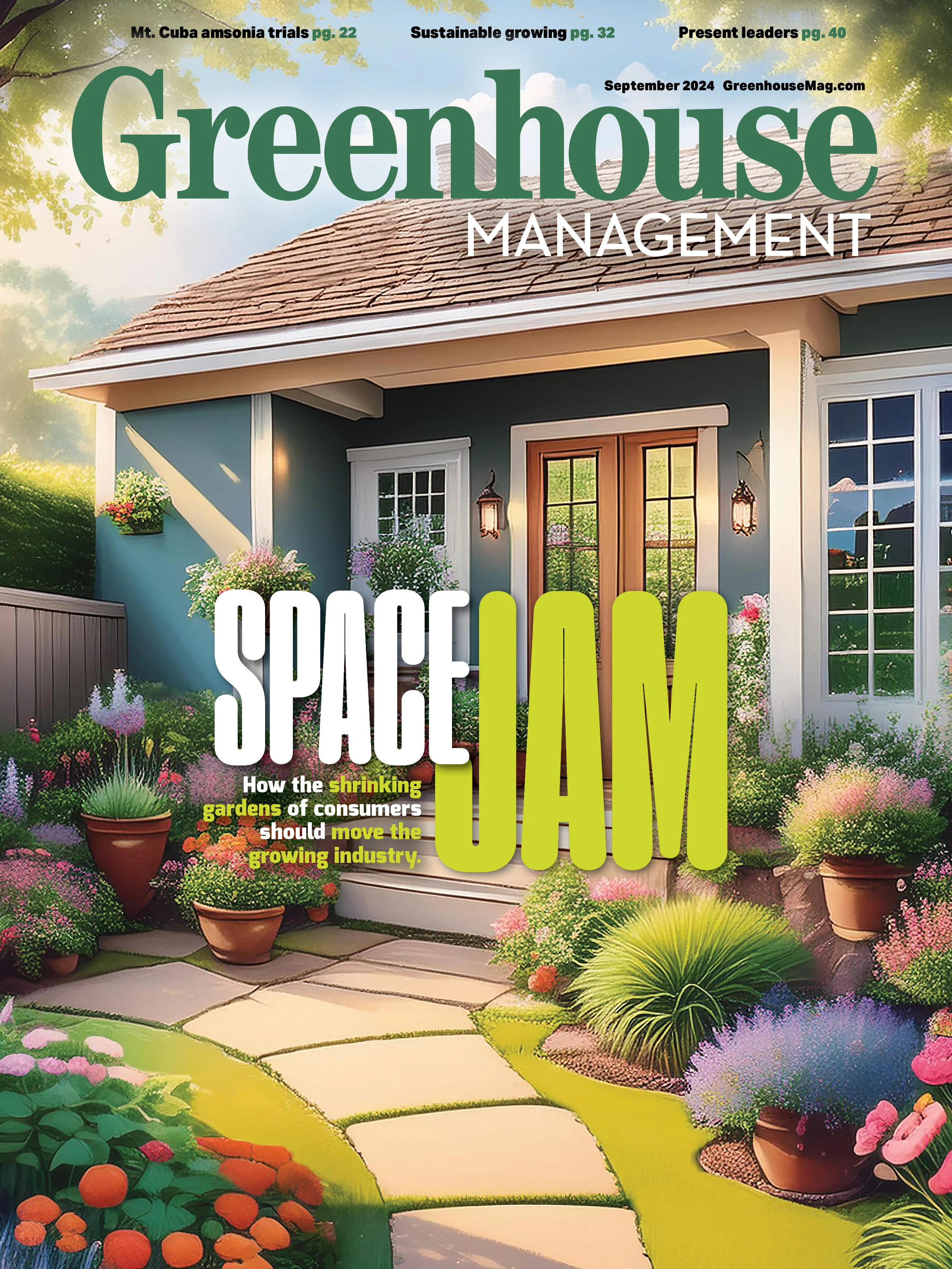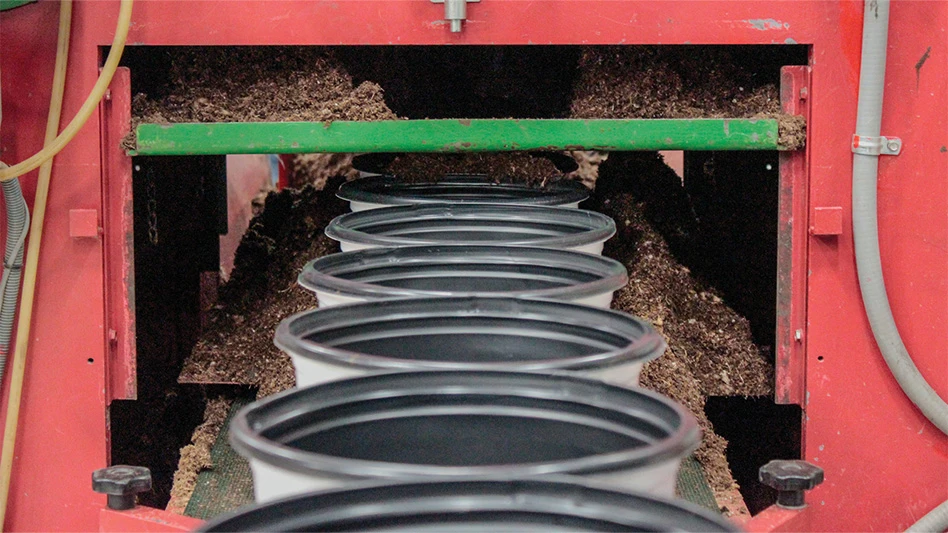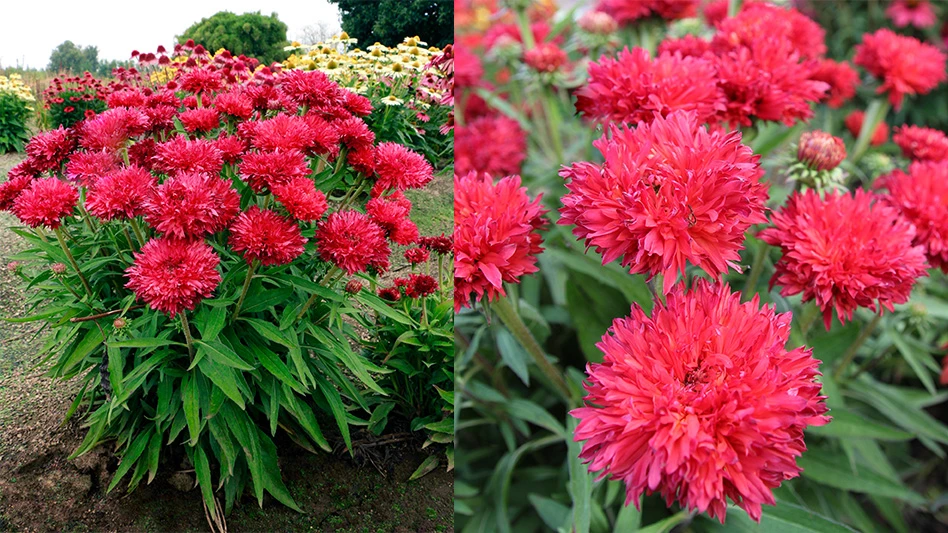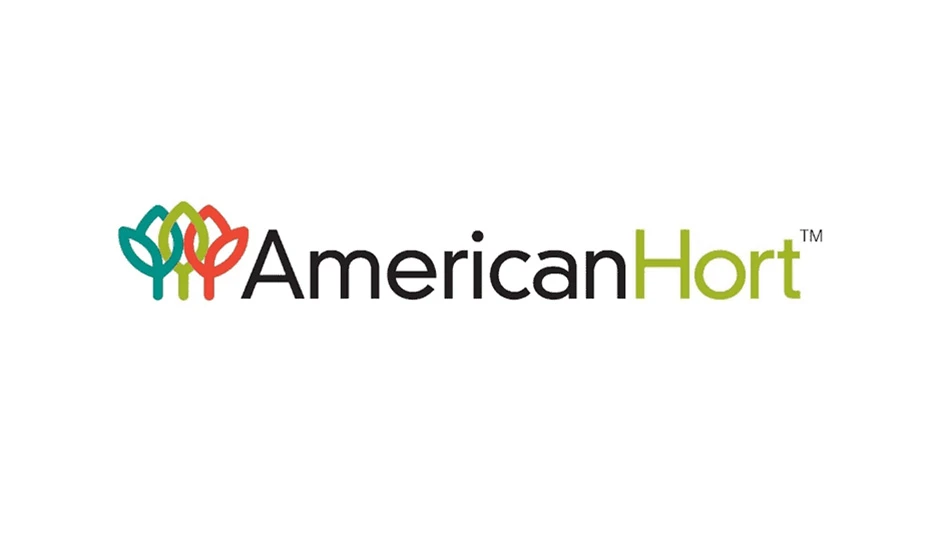
The word “garden” can conjure up visions of the vast lawns and tight hedges of English manors, the sprawling abundance hidden behind quaint cottages or vegetable patches growing produce in long mannered rows.
What the word is less likely to inspire in the mind is a few pots on a deck, perennials crammed into a foundation-adjacent strip of dirt or annuals packed along a short porch-side border. But according to the 2024 National Gardening Survey (NGS) from the National Gardening Association, the latter are becoming more common as home gardeners are confronted with less space to plant and grow.
“The percentage of housing that is now multi-family has risen to 30% from about 20% in 1960, and the average lot size has decreased from about a quarter of an acre to about a fifth of an acre,” explains Jim Feinson, strategic adviser and former CEO of Gardener’s Supply Company, for the report's analysis. He poses the critical question: “This means a need for different plants and different tools. Is the industry adequately adapting?”
But it’s not just the size of the gardens that the industry needs to adequately adjust to; it’s also the gardeners who are cultivating them.
“The Baby Boomers, 65 and up, are still gardening. They’re still engaged, but they’re downsizing. It’s not a financial problem; they just don’t want a big house with a big yard anymore,” says National Gardening Association Executive Director Dave Whitinger. “The younger generation wants to garden but can’t garden because they don’t have the space. It’s an overall headwind for the industry at large, but there’s a lot of opportunity there.”
And those opportunities are laid out in the data.
Who is gardening — and who isn’t?
Many of the NGS respondents are still gardening. In fact, 81% of households said they were taking part in gardening activities in 2023. That number is consistent with 2022 but remains 10% higher than pre-COVID years, indicating that those who took up the hobby have kept at it, even if motivations have changed. Today, both established gardeners and those just starting cite mental health and relaxation as the top motivating factor. Just a year ago, 30% of gardeners said that the COVID pandemic inspired them to take up the trowel. That number has declined to just 7% in 2023.
The NGS also reveals trends in gardener demographics. As in previous years, the survey shows that gardeners are becoming a more diverse group, with the number of Asian, Black and Hispanic gardeners growing year over year. That trend in diversity is bolstered by the fact that in 2023, 23% of those who started gardening reported Hispanic ethnicity.
Of those gardening, most are 45 and older. In fact, 2023 saw a 7% increase in new gardeners who were over 55 years old. At the same time, there was a significant decrease in new gardeners between the ages of 25 and 54. However, for established gardeners, there was a modest positive trend.
“We saw growth in most age groups — not to a huge percentage,” says Whitinger. “What’s interesting is the growth in those 18 to 24. They generally don’t have homes and live with Mom and Dad and are probably gardening at home with their parents.”
Whitinger notes that this phenomenon is reflected across social media. He points out that social media platforms like TikTok and Instagram are filled with images and videos of young people gardening — something he sees as a positive sign for the industry.
But what about those who are not gardening?
The good news is that the share of those who are not gardening at all continues to decline. Less optimistic is that the percentage of non-gardeners aged 25 to 34 and the number of non-gardeners living in homes both increased 8% in 2023.
Interestingly, nearly half (43%) of non-gardeners have gardened in the past. Ask them why they stopped, and the top answer is “No longer have space at my home” (28%) followed by “No longer had the time” (20%).
“But this is opportunity,” says Whitinger. “These are potential customers to get back.”

Show me the money
One way to understand how people are gardening around their homes is to look at how much they are spending on a variety of activities. And overall, the amount of money spent on gardening activities has been growing for the last four years. In 2020, the estimated total household spending on gardening was $40.3 billion. The average household spent $458 on gardening activities. In 2023, estimated household spending shot up to $75.9 billion, with the average household share around $671.
Lawn care, hardscaping and landscaping were the main drivers of garden spending in 2023 as people worked to improve large portions of their household landscape. But there were some significant increases. Spending on flower gardening grew from $3.4 billion in 2022 to $5.3 billion in 2023. Over that same period, vegetable gardening grew from $2.7 billion to $3.8 billion, indoor houseplant gardening grew from $2.3 billion to $3.4 billion and container gardening grew from $1.3 billion to $2.5 billion.
Importantly, all of this growth happened despite fears of inflationary economic headwinds. Some respondents did stop gardening because of cost (14%), and inflation remained a “very important” factor in the decision to both increase or decrease garden activities. However, there was a notable increase in those who said that inflation was “less important” in their decision to change garden activities.
What the financial data appear to show is that consumers are willing to spend to beautify their homes regardless of macroeconomic factors, and that they’d like to focus that spending on blooms and food in containers that will accentuate well-built and maintained outdoor spaces.
Garden hopes, garden nightmares
Understanding what consumers would like to receive from growers also means understanding what they’d like to accomplish — and what’s keeping them from achieving those accomplishments. But it’s important for growers to understand the context in which those garden hopes are built. Most survey respondents have been gardening for more than six years and participate in an average of five garden activities. So, the goals, motivations and barriers to success are likely grounded in real garden experiences.
Gardeners report health and wellness as their main reason to practice gardening. For 64% of gardeners, the motivation was relaxation, while 46% cited connection with nature. These motivations were followed closely by exercise (45%), saving money and adding value to the home (both cited by 40% of respondents).
These motivations were reflected in the hopes of first timers, 50% of whom said they started gardening because it was good for mental health. Beautifying the landscape was the inspiration for 47% of new gardeners, followed by wanting an enjoyable activity (33%) and wanting food for the family (31%).
But a relaxing, healthy and enjoyable activity is not without its downsides. Gardeners cited weeds, insects, too little rainfall or water, too hot climate and animal pests as the top five barriers. If they had more time, 60% of gardeners would participate more in gardening activities, while 58% would garden more if they had more knowledge. Finally, 52% would engage in more gardening if they had more space.
What gardeners want from growers
There is a portrait in the data of dedicated middle-aged gardeners, some of whom plant with older children. They’d both purchase and plant more if they had more time, space, knowledge and ability to adapt their garden to dry conditions. This portrait suggests opportunities in plant segments that solve those garden needs.


Ornamentals
There is a big opportunity for showy plants that have either smaller compact habits, grow tall or play well in containers that hang or fit in a small space. The compact habits are perfect for gardens that are crammed around foundations. Tall plants work as a central focus to containers and add visual oomph without spreading too far, and trailing plants can offer stunning displays in hanging baskets that maximize space.
Whitinger says that the industry is luckily on top of this trend. “People keep on breeding down, making smaller versions of plants,” he says. “In the ornamental space, if you’re growing them, they better be miniature.”
There are some recent examples of space-saving ornamental ideas. This year, for instance, Dümmen Orange introduced the La Diva lavender that features constant flowering throughout the growing season and offers big color in what the company calls its “most compact variety.” Dümmen Orange showcased the variety at Cultivate’24 in hanging pots to show off how its rounded habit provides interest even in smaller space-saving plantings.
Also in 2024, Suntory Flowers released the new Sun Parasol variety FiredUp Orange. One of the premier selling points of this dipladenia is the fact that it grows up rather than out — without a supporting trellis — making it a perfect thriller with bright color that will play well in a container with plants that grow lower.

Herbs and vegetables
A lack of space does not mean that a vegetable garden is out of reach. There have been big strides in what are essentially “fun-sized” produce plants that can offer the benefits of a raised bed bounty, but from a deck or countertop.
“There’s miniature versions of just about every type of vegetable you’d like to grow these days,” Whitinger says. “There’s little watermelons, cucumbers … People in an apartment can now grow vegetables.”
Whitinger calls out the Dwarf Tomato Project, a joint open-source seed venture launched by a U.S. and Australian breeding team. It was created to develop an array of diverse tomato varieties that grow on compact plants. The website offers nearly 140 varieties for the Northern Hemisphere alone.
But major brands have also gotten in on the action. During 2024 California Spring Trials, Prudac Americas unveiled ‘Tiny Temptations’ Red F1 (a new hybrid Solanum lycopersicum) that produces abundant fruit on kitchen counter-compatible plants.
Meanwhile, PanAmerican Seed expanded its Kitchen Minis collection with Basil Bonsai. This compact, uniform Greek basil offers smaller leaves and grows to a diminutive 6 inches up to 12 inches high and a spread of 6 to 12 inches, allowing consumer access to fresh basil all year long.
Landscape plants
The small and upright trend has extended to categories that are not otherwise known for staying compact. That means there are options even for those gardeners who want foundation plants to frame new hardscape projects.
At Cultivate’24, Plant Development Services, Inc. showcased Red Sky Ilex, a new evergreen in the Southern Living Plant Collection. This holly variety stays compact and upright for space-conscious consumers and features reddish new growth with black berries.
Also at Cultivate’24, Star Roses and Plants won a Retailers’ Choice Award for the Li’l Annie Oakleaf Hydrangea. Part of the Bloomables collection, this oakleaf hydrangea has white flowers that turn pink as they age but stays compact enough to exist happily in a container.

Knowledge
It’s important to remember that some of the biggest barriers gardeners are facing are connected to lack of knowledge. And while they report frustration with insects, water management and weeds, those issues can be managed by filling knowledge gaps about how and when to water, plus pest and weed control.
That is knowledge that greenhouse growers are uniquely positioned to provide. Even though some growers (those who are wholesale-only, for instance) may feel removed from the end consumer, finding an outlet for communicating growing knowledge helps the industry.
“A more educated gardening population is a growing population,” Whitinger says. “That raises the tide, and all the boats go up, including yours. You have the knowledge, expertise and experience to help the community.”
What’s more, there are plenty of platforms that connect directly with the younger consumers that the industry should want to develop into happy, confident gardeners. TikTok and Instagram may not initially appear like valid marketing tools, but their reach should be enough to inspire growers to experiment with the social media platforms.
In the final analysis, it’s important for growers to understand that the industry is poised to react to the space jam that is one of the biggest current industry headwinds. Being prepared to solve problems will ultimately lead to a more robust growing industry.
“Be aware of the changing demographic and position yourself for the future,” Whitinger notes. “Right now, customers want the problem of limited space solved.”
The full 2024 National Gardening Survey can be purchased from the National Gardening Association Research Division website at gardenresearch.com.

Explore the September 2024 Issue
Check out more from this issue and find your next story to read.
Latest from Greenhouse Management
- The HC Companies, Classic Home & Garden merge as Growscape
- Eason Horticultural Resources will now officially be known as EHR
- BioWorks receives EPA approval for new biological insecticide for thrips, aphids, whiteflies
- ScottsMiracle-Gro transfers cannabis subsidiary to focus on core lawn and garden business
- Ellen Mackenbach-Lakeman appointed new CEO of Dümmen Orange
- Southern Garden Tour sets 2025 dates for trial garden open houses
- Belgian thermal screen manufacturer Phormium launches Noctis Thermo
- New book explores plants that thrive in Rocky Mountains





